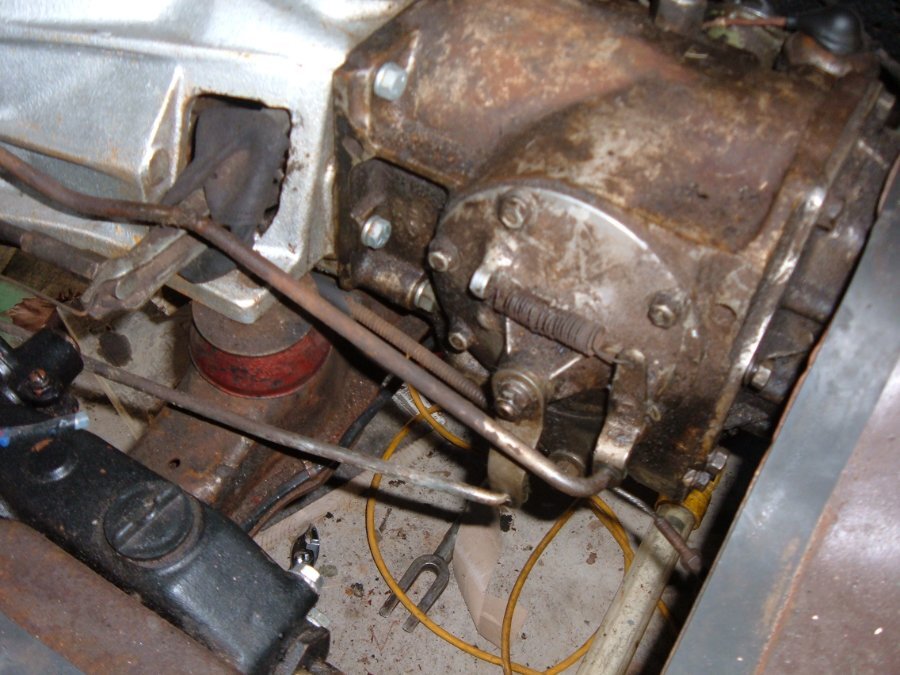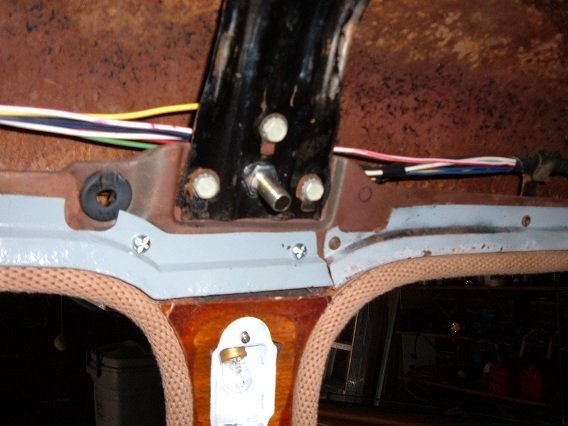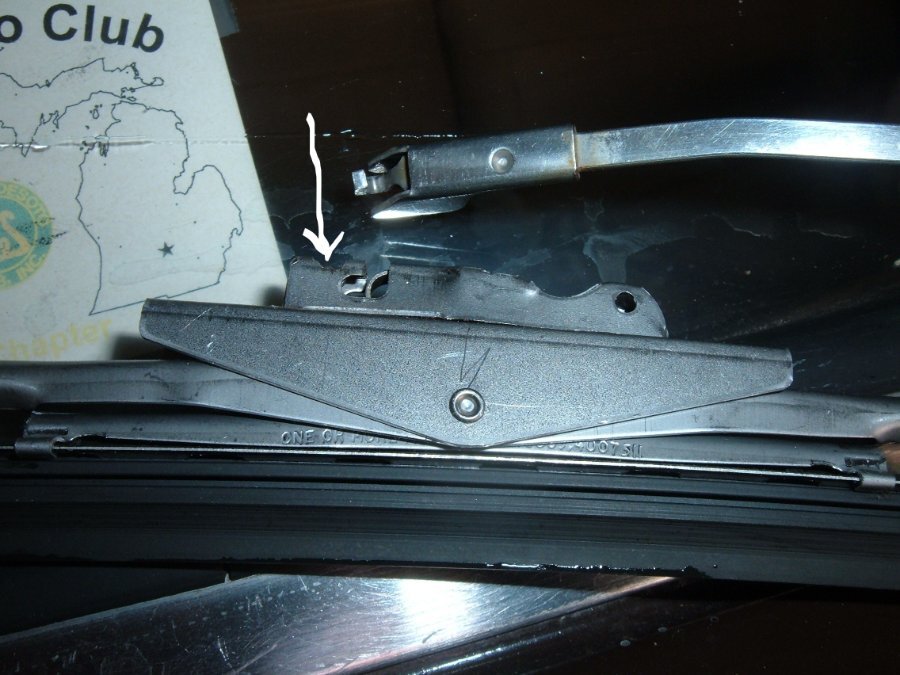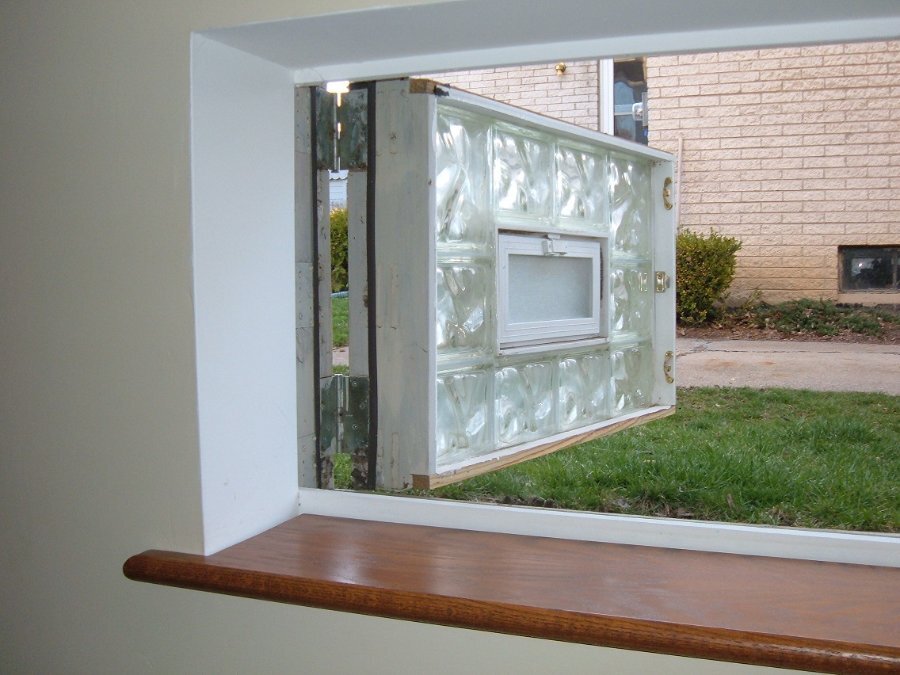-
Posts
2,470 -
Joined
-
Last visited
-
Days Won
25
Content Type
Links Directory
Profiles
Articles
Forums
Downloads
Store
Gallery
Blogs
Events
Everything posted by DonaldSmith
-
The ignition switch on my 47 DeSoto has a long post which connects numerous always-live accessories with an always-live source. Turning the key counterclockwise powers the Accessories post, for stuff to be live when the ignition is not live (Such as the radio. and maybe the horn.) Turning the ley clockwise from the off position powers the coil as well as those items powered in the Accessory position. I have a separate button to power the starter. If I wired it right, the starter will work only with the key in the Ignition position.
-
You might want the signal circuit (16 gauge, grounded at the steering wheel) to be controlled by the ignition switch as noted (IGN or ACC), so that kids in the car cannot play with the horn. Then you might want the power for the horn (10 gauge, noted as from the common connection at the starter solenoid) to bypass the ignition switch, because of its heavy current.
-
180 degrees off? Been there, done that. Now, a trick to know that the distributor is not 180 degrees off, is to have the No. 1 plug out and your thumb on the hole while you crank the engine up to Top Dead Center. You will feel the compression. (Do this with the coil disconnected, so you don't get a surprise from the loose plug wire. Do this with all the plugs out, so it cranks more easily.) This is easier than removing a valve cover to check that both the valves at No. 1 are closed.
-
The standard, original cap is vented.
-

Trouble installing new handbrake band on 48 DeSoto
DonaldSmith replied to MarcDeSoto's topic in P15-D24 Forum
The thickness of the handbrake band is critical. I had my band relined locally, after verifying that they had the appropriately thin material. No problems getting the band reinstalled. -
Bolt lengths? There is some room within the bell housing (brain lapse - is that what we call it?) for the bolts to go in, without hitting the clutch assembly, so they can be long enough to help pull the transmission in. As I remember from six years ago - Of the four bolts to the bell housing (?)' the bottom left bolt has to be short enough to fit. (I forget the purpose of the bolt is on the boss below our lower left bolt.) I used various sawed-off bolts as guide pins to slide the trans into place, some really long at one point. You shouldn't need a guide pin for that short bolt location. x
-
Does Tired Iron have the manual trans or the Gyro-Matic behind his fluid coupling? Would the Gyro work without the fluid coupling? Like an overdrive (but as an underdrive)? Inquiring minds need to know.
-
We used to use a loupe to look at photo slides. Remember? Those films in a cardboard frame that were stuck into a projector, to show still pictures? For sorting the slides, one would put them on a backlit translucent surface, and look through the loupe. Return with us now to the thrilling days of yesteryear.
-
I remember when the big push was for the metric system across the U.S. Metric makes sense for products with an international market. And I'm quite used to it for wrenching contemporary vehicles and foreign-sourced stuff. But otherwise, why bother? Feet, miles acres, what we're used to. Don't make us change our lives. Tongue in cheek, I expounded that I wouldn't touch the metric system with a three meter pole. My Canadian cousins, of advanced age like me, live grudgingly with the metric system. Hard to think in Celsius instead of Fahrenheit, KMH instead of MPH. They are like immigrants, who get by in the new language but still think in the old. For their benefit, I repeated a jingle for temperatures that I had heard: 30 is hot, and 20 is nice. 10 is cool, and 0 is ice. They looked at me like I was from another planet. So, tonight it's 32 degrees around Detroit, but southeast of here, in Windsor, it's zero.
-
I did the column surgery and U-joints to put a Power steering gearbox in my 47DeSoto. I fabricated a column support and bushing at the firewall, a spline on the shortened shaft, and a sleeve-and-brush arrangement for the wire from the horn ring. My report should be somewhere in the resources. But here's a photo. Once you get past the gearshift linkage, there's not much room to vee around a manifold to the steering box. I used the Bergeson shafts and U-joints. The maximum angle of the U-joints is 30 or 35 degrees, and there would have to be bushing to hold the shafts away from the manifold.
-
From my powee steering report: "I decided to replace my manual steering gearbox with a readily available power steering gearbox. This would allow me to keep the steering pitman arm and tie rods. "I verified that the pinion shaft on the manual box was 1-1/4-inch diameter at the root, with 40 splines (Four of the splines are flattened, so that the pitman arm for various applications is in one of four positions.)"
-

headliner installation question for 48 dodge sedan
DonaldSmith replied to Ed McDermott's topic in P15-D24 Forum
The metal channels, which I primed in a blue color, have teeth on the backside, to catch the edge of the headliner fabric that is pushed up behind the channels. x x -
Years ago, i removed my seal and recoated it. I slit the seal to remove it, and coated it with tool handle dip. Looks good enough from a distance. I also did the door sills, but the tool dip has been peeling.
-
Years ago, I cut a notch in the wiper blade connectors, to receive the hooked arms. (The white arrow is new; I could use more practice with the editing.)
-

Fan placement post water pump replacement
DonaldSmith replied to White Spyder's topic in P15-D24 Forum
At the generator (alternator) bracket, I replaced the water pump bolt with a stud and nuts, so that I wouldn't compromise the water seal when adjusting the belt tension. A nut and lock washer on the stud secure the pump housing, and another nut loosely holds the adjustment bracket. I drilled through the stud for a cotter pin to keep the loose nut from backing off too much. -

MoPar Evr-Dry WeatherProofing Service kit
DonaldSmith replied to MarcDeSoto's topic in P15-D24 Forum
The "Enjoy quick starting..." promotional artwork took some artistic liberties? I only see five spark plugs and five spark plug wires. There are strange white blobs, where the spark plug would be, at the wires coming out of the tube, and at the distributor cap. Maybe the Ever-Dry works for 5 out of 6 spark plugs. -
My neighbor has forbidden me to get on the roof. A few years ago he saw me upon the roof, and shouted, "Are you crazy?" I answered, "I may be crazy but I'm persistent." This neighbor will give me a hand where I need it. And I lend him tools and advice. We have keys to each other's house. HIs kids own our driveway, yards, and screened porch. That's being a neighbor.
-

I've been working on my 1948 Dodge Custom Deluxe Town Sedan .
DonaldSmith replied to Mr Stewart's topic in P15-D24 Forum
I see it's the somewhat rare Town Sedan, with the rear doors hinged at the front, like modern cars. -
I lost a hubcap from my DeSoto on the way to the 2003 DeSoto convention. Days later I searched the roadside with no luck. I put an ad in the National DeSoto Club magazine, and got a hit. One of the home owners along the road found the hubcap and notified a fellow employee who was in the club. Reunited with my hubcap, I sent the home owner an club member a DeSoto mug. I since marked the back of each hubcap with my name, address and phone number.
-
It helps to think that whatever we engineer (cobble) is really a prototype. A prototype is "try it and see", and re-engineer (re-cobble) it later, based on what we find has to change. The only difference between us and the world of commerce is that we don't make a billion units based on what we learned from the prototype. We do have this forum, however, so that others can benefit from our experience. And, somehow, we're having fun in the process.
-
The hinges are spec grade stainless steel, but without bearings. Rust-resistant, but low frequency. I drilled a set screw into each pin, for security. The door sags noticeably, but there is a "ramp" to raise the door as it closes. I open the door a few times a year, to break it free if necessary. Once, the three-year-old neighbor girl saw the sign and read, "Exit!" The neighbor kids are fascinated by the window, especially when I open it and yell at them in their yard. The neighbor kids own our front screened porch. It's sometimes a hair salon, and sometimes a dentist office. With the patient reclined in the anti-gravity chair, the "dentist" proclaims, "Let's see if you're ready for braces." Our driveway, three cars wide at the garage, is their race course, for skates, bikes, and battery-powered kid-size cars. Our front yard is a gymnasium in season, for cartwheels and other feats. After a few inches of snow, the yard was a bobsled course, with mother and oldest daughter pulling the youngest daughter and the youngest, a boy. (The second-in-line daughter was probably inside reading, or doing piano lessons.) And they all enjoy the basement rec-room, with an array of Fisher-Price toys for the younger ones, and puzzles to challenge all of them. My son says that these kids are our surrogate grandkids.
-
So nobody is taking the bait: "How do you fit through an 8 by 16 vent in your glass block window?" The Secret: I thought it was so clever that I sent photos to Pittsburgh-Corning. No word back, yet.
-
I know that my exit window doesn't meet code. Each minimum dimension and the minimum total area has to be such that a fireman (or firewoman) can go through the opening with a SCUBA tank on the back.
-
Several years ago, I re-glazed my basement windows with glass blocks. Knowing that all livable spaces in a basement are required by code to have a secondary exit route, I provided an exit window. I was much smaller then, but I can still get out that window.








